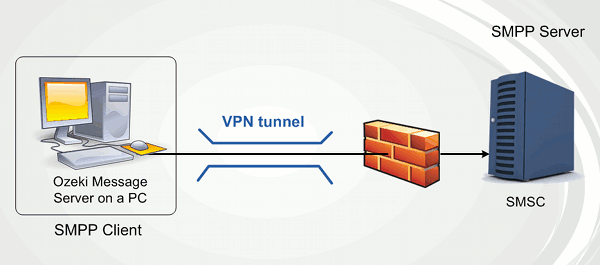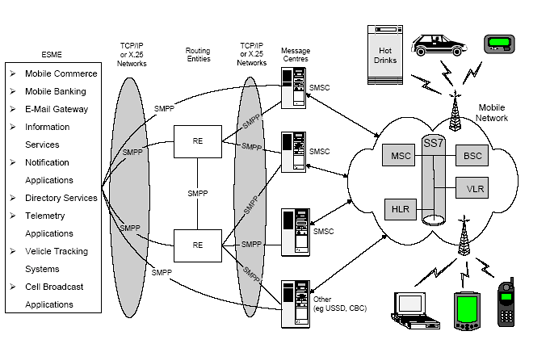Common protocols - SMPP
The Short Message Peer to Peer (SMPP) protocol is an open, industry standard protocol designed to provide a flexible data communications interface for the transfer of short message data between External Short Message Entities (ESME), Routing Entities (RE) and Message Centers. SMPP is capable to carry any message type just like UCP/EMI.
SMPP can be used as a protocol that transfers messages between applications, such as Ozeki Message Server and the Short Message Service Center (SMS Center) of the GSM Service provider over an IP link. This link can be a leased line or the Internet. The IP connection between your PC and the SMSC might be protected by VPN (Figure 1.)

If you wish to use UCP to connect to your service provider, you need to get the following information from the service provider:
| IP address of the SMSC |
| Port number of the SMSC |
| User name |
| Password |
If you would like to get some insights about SMPP, you must be familiar with some of the following terms. A Message Centre (MC) is a generic term used to describe systems such as a Short Message Service Centre (SMSC), GSM Unstructured Supplementary Services Data (USSD) Server, or Cell Broadcast Centre (CBC).
A ESME typically represents a fixed network SMS client, such as a WAP Proxy Server, EMail Gateway, or Voice Mail Server. It may also represent a Cell Broadcast Entity (CBE). A Routing Entity (RE) is a generic term for a network element that is utilized for MC to MC, and ESME to MC message routing. A RE has the ability to emulate the functionality associated with both a MC and an ESME. To an ESME, a RE appears as a MC and to a MC, a RE appears as an ESME. A carrier may utilize REs to hide a network of Message Centres, presenting only the REs as the external interface point for ESMEs.
Figure 2 illustrates the context of SMPP in a mobile network:

